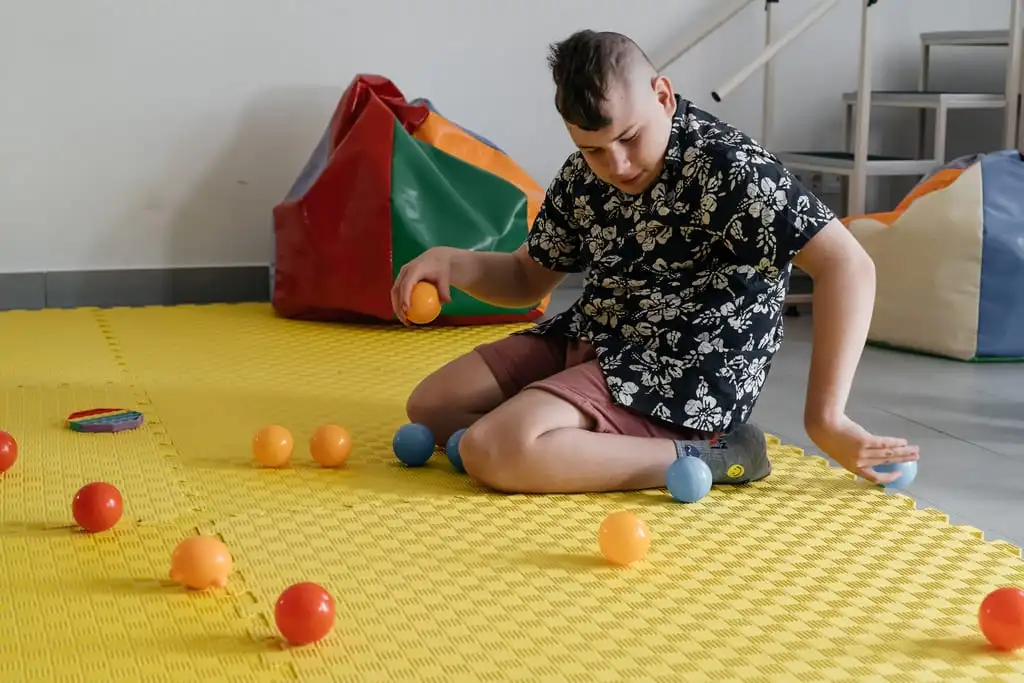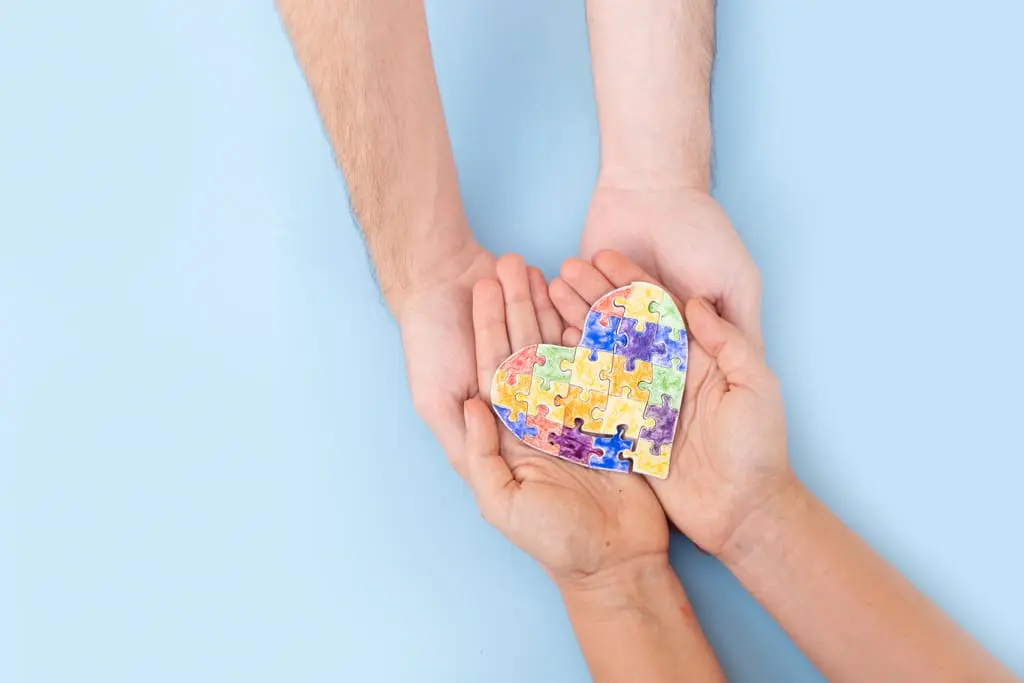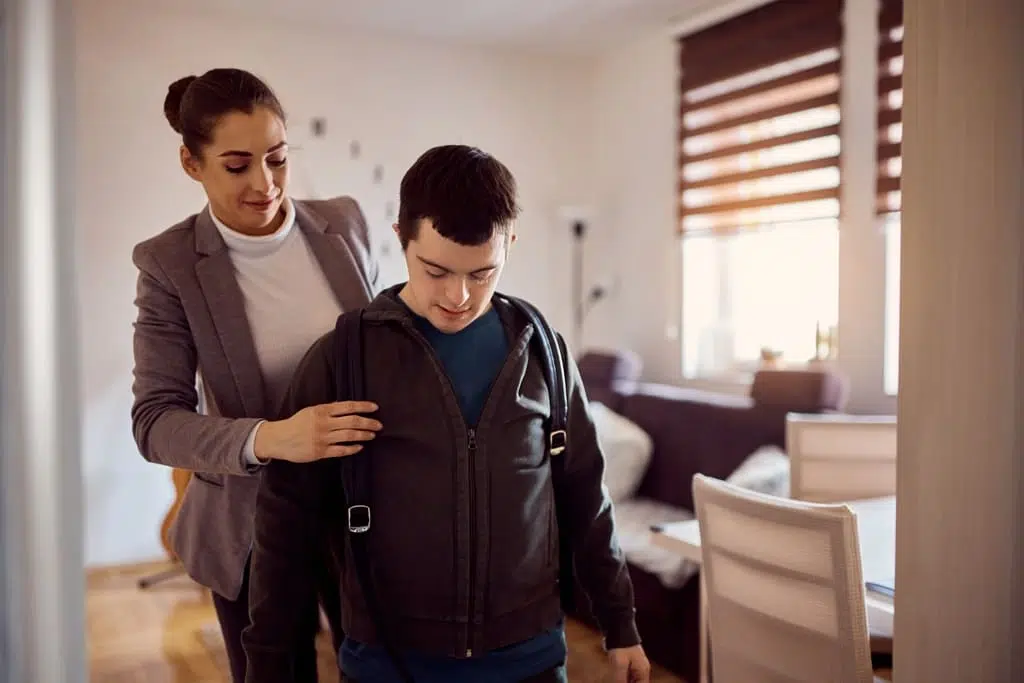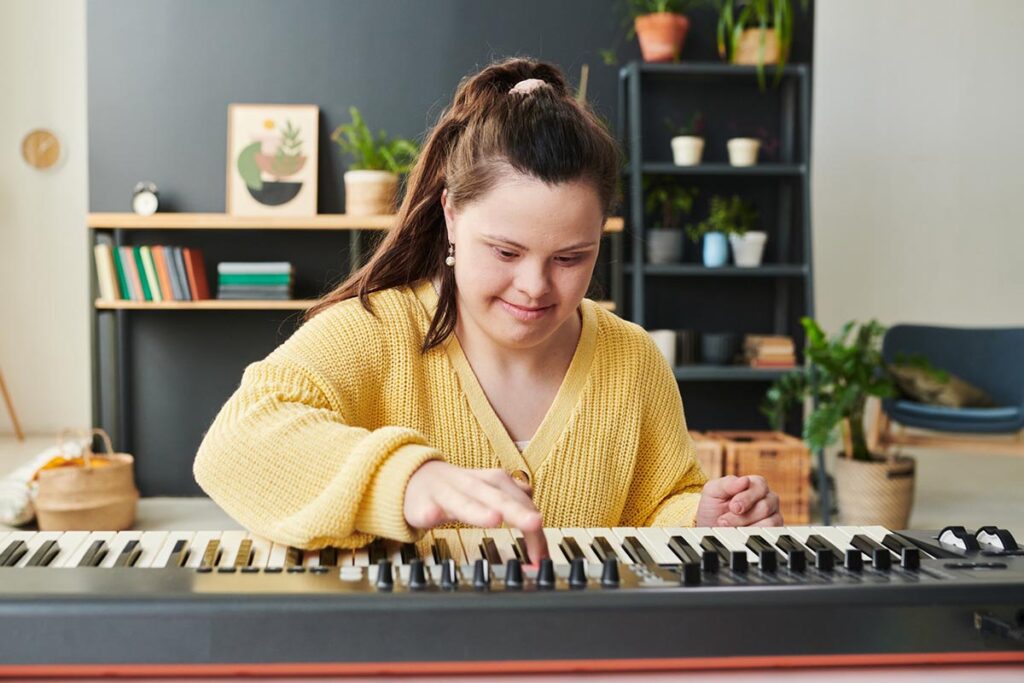What Are The Different Types of Autism?
Autism, as a neurological difference, impacts how individuals communicate and interact with the world around them. Autism should be referred to as a ”neurological difference” rather than an “autism spectrum disorder(ASD)/autism spectrum disorders” or ”autistic disorder” to reduce stigma and encourage understanding. Challenges with social and communication skills, repetitive behaviors, and many unique strengths and differences generally characterise autism. Each individual with autism is unique, and their experiences and challenges can vary widely. Early intervention, therapy, and support can significantly improve outcomes for autistic individuals, helping to lead fulfilling lives.
Please learn more through our case studies about how Leaf Complex Care supports autistic individuals in living more independently on their own terms and in their own homes.
There are several types of autism that encompass different characteristics. Here are some of the common types of autism:
Asperger's Syndrome
Asperger’s syndrome, named after Austrian paediatrician Hans Asperger, was first described in 1944. Asperger’s work was not widely recognised until the 1980s when British psychiatrist Lorna Wing introduced the term “Asperger’s syndrome” to the field of autism research. According to the National Autistic Society, this recognition helped differentiate it from other forms of autism and raised awareness about the diverse presentation of autism spectrum disorder.
Many individuals with Asperger’s syndrome have strong intellectual abilities and a deep passion for specific subjects. They may excel in areas such as mathematics, music, or technology, often displaying remarkable attention to detail. However, they may also experience challenges with social skills, finding it challenging to interpret non-speaking cues or engage in typical conversations. Despite these challenges, individuals with Asperger’s syndrome can lead fulfilling lives by leveraging their unique strengths and interests.
Autistic individuals, including those who were previously characterised with Asperger syndrome, continue to advocate for acceptance, understanding, and support based on their individual needs and strengths.
Kanner's Syndrome
Kanner’s syndrome, named after Austrian psychiatrist Leo Kanner, is a term that was once used to describe what is now known as ‘classic autistic disorder’. This term was used in the mid-20th century to characterise individuals who experienced significant challenges with communication, social interaction, and sensory stimuli. Kanner’s syndrome was considered rare, and early descriptions of autism focused on children who had challenges in reciprocal social engagement and communication, activity patterns, and developmental challenges by the time the child reached three years old. However, our understanding of autism has evolved significantly since then, and we now recognise autism with a wide range of expressions and abilities.

Today, we understand that autism is a neurological difference that affects how individuals process information and interact with the world. The term “Kanner’s syndrome” is no longer used in professional or clinical settings, as it is considered outdated and potentially stigmatising. Instead, the preferred terminology is “autism spectrum”, which acknowledges the diversity of experiences and abilities within the autistic community. Recognising the strengths and challenges that each individual may face and emphasising the importance of acceptance and support for all members of the autistic community is fundamental to building a more loving and accepting society.
Rett Syndrome
Rett syndrome is a rare genetic condition that primarily affects girls and is characterised by severe difficulties in language and motor skills. It is lifelong and typically becomes apparent in early childhood, between 6 months and 18 months of age. Individuals living with Rett syndrome often experience a regression of skills, meaning they lose abilities they had previously developed, such as walking or using their hands, cognitive disabilities, and developmental delays. Other signs of Rett syndrome may include repetitive hand movements, such as wringing or washing motions, breathing and feeding difficulties, seizures, and intellectual disability.
The exact cause of Rett syndrome is not fully understood, but it is known to be caused by mutations in the MECP2 gene located on the X chromosome. This gene provides instructions for making a protein crucial for brain development and function. Rett syndrome is a genetic disorder, and it is not caused by environmental factors or parenting practices. Treatment for Rett syndrome focuses on managing symptoms and providing support to improve quality of life. This may include very substantial support such as occupational therapy, speech and language therapy, and sometimes medications to manage seizures or breathing difficulties.
Rett syndrome is not part of autism spectrum disorder. However, there are shared symptoms, like social difficulties and repetitive behaviors. Support from healthcare professionals and organisations like Rett UK can be invaluable for individuals and families living with Rett syndrome.
Childhood Disintegrative Disorder (CDD)
Childhood disintegrative disorder (CDD), also known as Heller’s syndrome, is a rare condition that falls under the umbrella of the autism spectrum. It typically manifests between the ages of 2 and 10, and children who experience it have often achieved typical developmental milestones before the regression of skills. Children with childhood disintegrative disorder may initially develop typically, reaching milestones such as walking, talking, and socialising. However, they then experience a significant loss of previously developed skills, such as language, social interaction and communication skills, bowel or bladder control, play, or motor skills.


Early intervention is crucial for children with CDD to help manage symptoms, support development, and improve quality of life. While the exact cause of CDD is unknown, it is believed to be related to differences in the brain. Treatment often involves a combination of therapies, including speech, occupational, and behavioural therapy, tailored to the individual’s specific needs.
Pervasive Developmental Disorder Not Otherwise Specified (PDD-NOS)
Pervasive developmental disorder not otherwise specified (PDD-NOS) was a term used in the past to describe individuals who did not fully meet the criteria for other specific types of autism, such as Asperger’s syndrome. People with PDD-NOS typically exhibited some, but not all, of the characteristics of autism. These characteristics often included challenges with social interactions, communication difficulties, and repetitive behaviours. While the specific characteristics and severity varied widely among individuals with PDD-NOS, they all shared a common trait of experiencing differences in how they interacted with the world.
It is important to note that the removal of pervasive developmental disorder from the diagnostic criteria does not change the experiences or challenges faced by individuals with autism; instead, it highlights the need for individualised support and interventions to address their unique needs.
Severity of Autism Types
Autism is often categorised into three levels of severity based on the level of support a person may need in their daily life. Here’s an overview of each level:
Level 1: Requiring Support: Individuals with level 1 autism spectrum need some support in their daily lives. They may have challenges with social interactions, communication, and flexibility in thinking, but they can generally function independently with the right support in place. People at this level may have mild to moderate challenges that impact their ability to navigate social situations and daily routines.


Level 2: Requiring Substantial Support: Individuals with level 2 autism spectrum require more substantial support in their daily lives. They have more pronounced challenges with social communication and interaction and repetitive behaviours and may struggle with changes in routine or environment. People at this level may require more structured support and intervention to help them navigate daily tasks and social situations.
Level 3: Requiring Very Substantial Support: Individuals with level 3 autism spectrum require very substantial support in all areas of their lives. They have severe challenges with social communication and interaction, repetitive behaviours, and may have limited or no speaking communication skills. People at this level often require intensive, specialised support to meet their daily needs and navigate the world around them.
Autism Spectrum as Neurodiversity
The concept of neurodiversity views the autism spectrum as a natural and valuable part of human diversity, similar to other forms of neurodiversity like ADHD or dyslexia. It recognises that individuals with ASD have unique strengths, viewpoints, and ways of thinking that should be respected and celebrated. Neurodiversity advocates emphasise the importance of accepting and accommodating these differences rather than viewing them as disorders or deficits that must be fixed or cured.
Embracing neurodiversity can lead to greater acceptance, inclusion, and accommodation of individuals with ASD in society. They argue for approaches that focus on providing support, accommodations, and opportunities for individuals with ASD to thrive based on their unique strengths and abilities rather than trying to make them conform to neurotypical standards. Overall, viewing autism as neurodiversity encourages a more inclusive and accepting society that values the unique contributions and perspectives of autistic individuals.
A View Through a Different Prism
Autism can be viewed as a neurodivergence, which means that the neurological makeup of autistic individuals is different from what is considered typical or neurotypical. Viewing autism as a neurodivergence can help promote acceptance and understanding of autistic individuals and their unique experiences.
Autistic individuals often have strengths that are associated with their neurodivergent traits. Some common strengths of autistic individuals include:
- Attention to Detail - Many autistic individuals have a keen eye for detail and can focus intensely on specific interests or tasks.
- Pattern Recognition - Autistic individuals may excel at recognising patterns, which can be advantageous in music and art.
- Memory - Some autistic individuals have exceptional memory skills, particularly when it comes to remembering factual information or details.
- Logical Thinking - Autistic individuals often have a strong ability to think logically and analytically, which can benefit problem-solving situations.
- Creativity - Many autistic individuals are highly creative and may express themselves through art, music, writing, or other creative outlets.
- Passion and Dedication - When autistic individuals are interested in a topic or activity, they often demonstrate intense passion and dedication, leading to high levels of expertise.
Autism Support with Leaf Complex Care
Leaf Complex Care provides tailored support for autistic individuals, focusing on their unique needs and abilities. It enables person-centred care through support plans tailored to their unique needs and goals. We also have highly trained clinicians trained in autism awareness who have the skills and knowledge to support individuals with autism to live more independently.
Our care team’s structured support is developed to help individuals with autism navigate daily routines and activities. The behavioural support is provided by an in-house specialist therapy team consisting of Positive Behaviour Support (PBS) practitioners, speech and language therapists, and occupational therapists.
We also provide crisis support within 4-6 hours of the initial call, depending on the provided location. It is followed by family support that ensures that assistance is always available whenever they need it.
For more information about our services and support, contact us today or visit our Bristol, Slough, Birmingham and Somerset offices.







